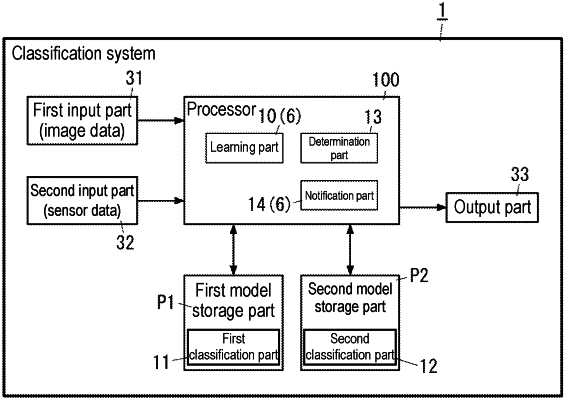| CPC G06F 16/55 (2019.01) [G06Q 50/04 (2013.01)] | 10 Claims |

|
1. A classification system for determining a defect in a product, comprising:
a processor;
a first input interface that receives an image of the product captured by a camera, and inputs an image of the product as a first target data to the processor,
a second input interface that receives, as electrical signals, one or more feature quantities with respect to manufacturing data related to a manufacturing condition of the product obtained by one or more sensors, and inputs the one or more features quantities as a second target data to the processor,
a first storage device that comprises a first classification part and a plurality of first classes, wherein the first classification part classifies the first target data input from the first input interface into at least one first class among a plurality of first classes, thereby obtaining a first classification result;
a second storage device that comprises a second classification part and a plurality of second classes, wherein the second classification part classifies the second target data input from the second input interface into at least one second class among a plurality of second classes, thereby obtaining a second classification result; and
an output interface, wherein:
the processor:
decides whether to use one or both of the first classification result and the second classification result,
determines whether the product has a defect or not, and
when determined that the product has a defect, determines a class of the defect based on the one or both of the first classification result and the second classification result,
the output interface outputs information indicating that the product is in a normal state without a defect or information indicating that the product is in an anomalous state with a defect and the class,
the first classification part comprises a learned model that has learned the plurality of first classes from image data of multiple products, and
the second classification part comprises a model in which the plurality of second classes is associated with a data distribution of the one or more feature quantities.
|